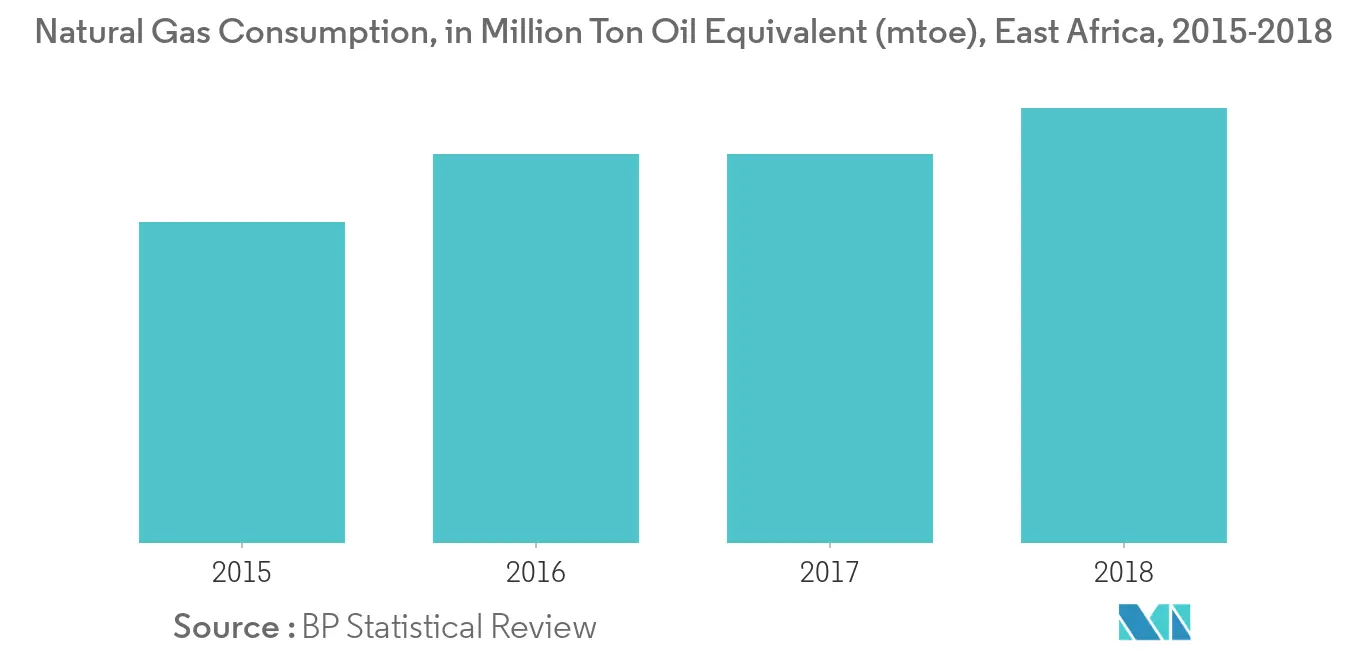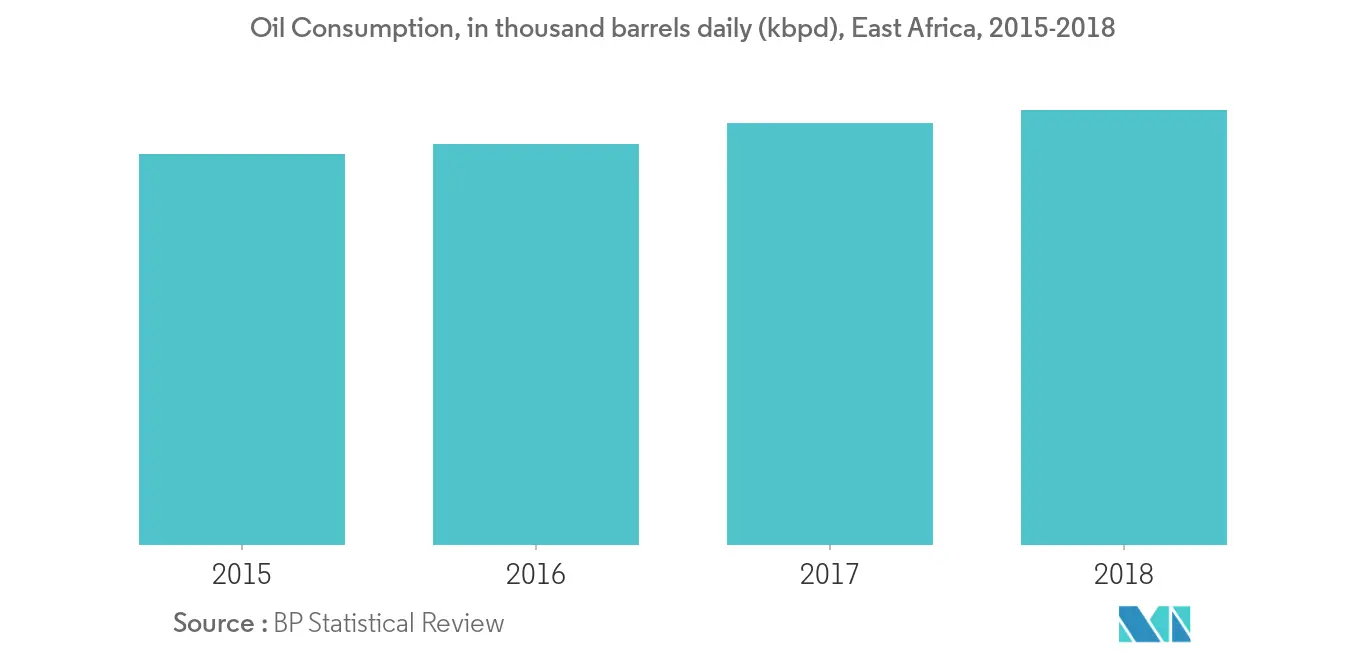Market Trends of East Africa Oil and Gas Midstream Industry
Transportation Sector to Witness Growth
- As the stability in many of the countries in the region has increased, prosperity has led to an increase in the purchasing power of the citizens, and demand for goods like oil and gas has also seen a significant improvement and is expected to remain high in the forecast period.
- Consumption of natural gas increased in the region, by 7.93%, year on year, from 1.9 million tons of oil equivalent (mtoe), in 2015 to 1.4 mtoe, in 2018. The increase in consumption incentivizes the investors for the required increase in capacity and increases the investments in the future, thereby boosting growth in the industry.
- In 2019, the total capacity of gas pipelines in Mozambique was approximately 95471 barrels of oil equivalent per day. Mozambique-South Africa Gas pipeline with a length of 537 miles (865 km) and a capacity of 540.3 million cubic feet per year is the largest gas pipeline in the country, and such projects may build further in the forecast period.
- Hence, pipeline capacity is expected to increase slightly in the forecast period due to an increase in the production and consumption of oil and gas and rising investment in the sector.

Kenya to Dominate the Market
- Kenya is expected to invest heavily in the expansion of the midstream sector in the country, especially in collaboration with neighboring countries. Landlocked Countries like South Sudan have signed deals to directly access Kenya's harbors to export oil and gas, which is also expected to be a beneficial deal for both countries.
- Lamu Port-South Sudan Pipeline is a proposed oil pipeline in South Sudan and Kenya. The pipeline would run from South Sudan oil fields to Lokichar, Kenya, where it would connect to the Kenya Crude Oil Pipeline, which ends at Kenya's Lamu Port for export. The capacity of the pipeline is expected to be around 160,000 barrels per day.
- In 2019, the total capacity of oil pipelines in Kenya was approximately 275,000 barrels of oil equivalent per day. Western Kenya Pipeline Extension with a length of 277 miles (446 km) and a capacity of 150,000 barrels of oil equivalent per day is the largest pipeline in the country.
- Oil consumption in the region increased, by 3.1%, from 604 thousand barrels per day (kbpd), in 2017 to 624 kbpd, in 2018. The increase in consumption incentivizes the investors for the required increase in capacity and increases the investments in the future, thereby boosting growth in the industry.
- Kenya oil and gas midstream industry is expected to grow significantly in the forecast period due to an expected increase in the consumption of oil and natural gas and rising investments in the midstream industry of the region.



